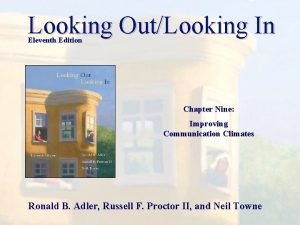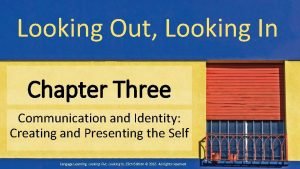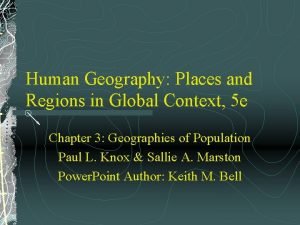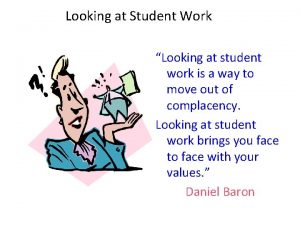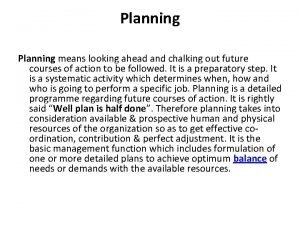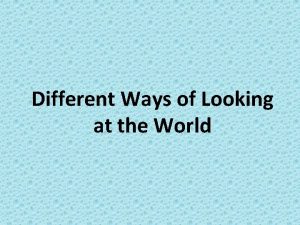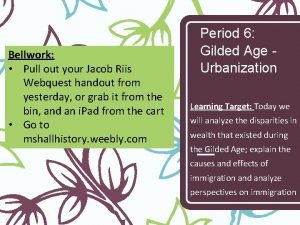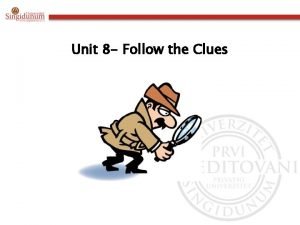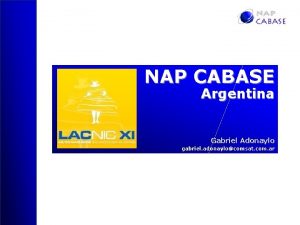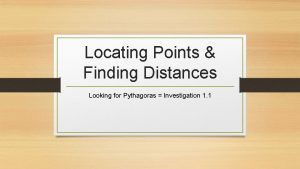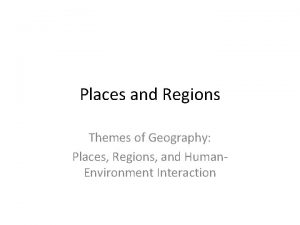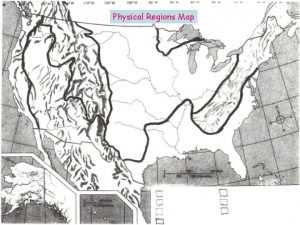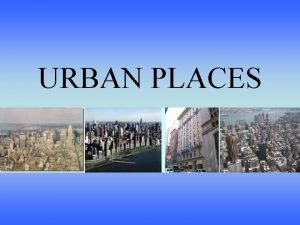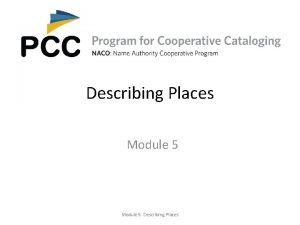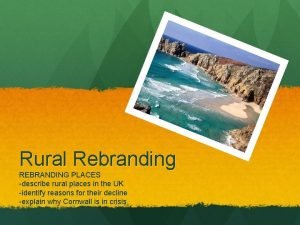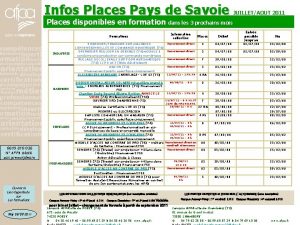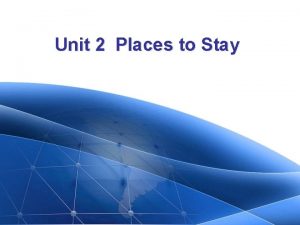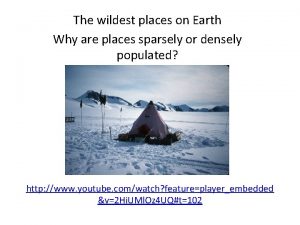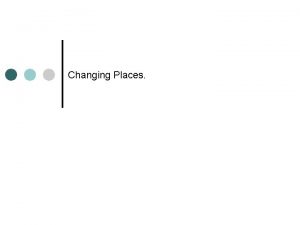Looking at Regions What are Regions v Places



















- Slides: 19

Looking at Regions

What are Regions? v. Places are divided into regions for different reasons. v. Regions can be based on physical features, climate, economy, culture, etc. v. Each region has unique landforms and natural resources that help generate money for that region.

Why do people divide places into regions? A. Regions help unite citizens B. Regions make it easier to learn and talk about a place. C. Regions are necessary to find relative locations D. Regions help the economy grow.

Regions of the United States Northeast Southwest Southeast West Midwest

The Regions of the U. S.

Characteristics of Regions v Landforms – States in regions have common physical features, such as mountains, beaches, lakes, etc. v. Climate – States in regions have similar weather. v. Natural Resources – Regions have certain natural resources that are directly linked to the types of landforms present in that region. v. Culture – Regions have similar traditions, beliefs, and customs that are unique to that area.

People in one region depend on people in another regions because… No one region has all the products and resources it needs.

Urban and Rural Areas Regions are made up of rural and urban areas. Urban Area Rural Area How are urban areas different than rural areas?

Characteristics of Urban and Rural Areas Urban • Cities are considered urban areas. • Urban areas have a lot of people, or high population density. • Urban areas have large buildings, stores, houses , and streets that are close together. Rural • Small communities like Dixie or Swiss. • Rural areas have fewer people, or a low population density. • Rural areas have fewer, smaller buildings, roads, and they are further apart.

Suburban Areas *Suburban areas are places between the urban and rural areas. * It has characteristics of both urban and rural areas.

Suburban Area Discuss: How is the suburban area like an urban area? How is it like a rural area?

The Economy of Regions Each regions’ economy, or way of making money, is based on several things.

The economy of a region is based on several things: * natural resources * landforms * climate

Natural Resources Natural resources are anything found in nature that can be used to make products we can use. Can you name a few natural resources?

Landforms and the Economy How do landforms, such as rivers, mountains, and oceans help the economies of different regions?

Climate and the Economy • How does the climate affect the economy of different regions?

Soil and the Economy How can the soil affect the economy of a region? Think about what soil can do to help make money!

Putting It All Together Use different maps to help answer these questions. Look at each region on the map. Identify landforms and explain how they contribute to the economy. Identify bodies of water and explain how they contribute to the economy. Identify the natural resources of the region and explain how they contribute to the economy

Why is this all important? It will help you with your next big project!
 Antigentest åre
Antigentest åre Looking out looking in chapter 9
Looking out looking in chapter 9 Looking out/looking in
Looking out/looking in Human geography places and regions in global context
Human geography places and regions in global context Looking at student work
Looking at student work Planning is looking ahead and control is
Planning is looking ahead and control is Ways of looking at the world
Ways of looking at the world Looking forward to coming back
Looking forward to coming back Looking backward political cartoon explanation
Looking backward political cartoon explanation Living things grow images
Living things grow images Puffy, lumpy-looking clouds that usually occur below 2000 m
Puffy, lumpy-looking clouds that usually occur below 2000 m Sherlock holmes looking for clues
Sherlock holmes looking for clues Joseph keppler looking backward cartoon analysis
Joseph keppler looking backward cartoon analysis How to tell if someone is lying
How to tell if someone is lying Looking forward to hear from you
Looking forward to hear from you Looking without seeing
Looking without seeing Cabase looking glass
Cabase looking glass Bumper looking persuasive
Bumper looking persuasive City of euclid
City of euclid Shepherd fungura
Shepherd fungura

